I recently bought a netbook LG X130, and since I couldn’t find much information about it on the internet (apart from “reviews” which were actually just a rephrasing of the original press release), I thought I’ll write down my first impressions.
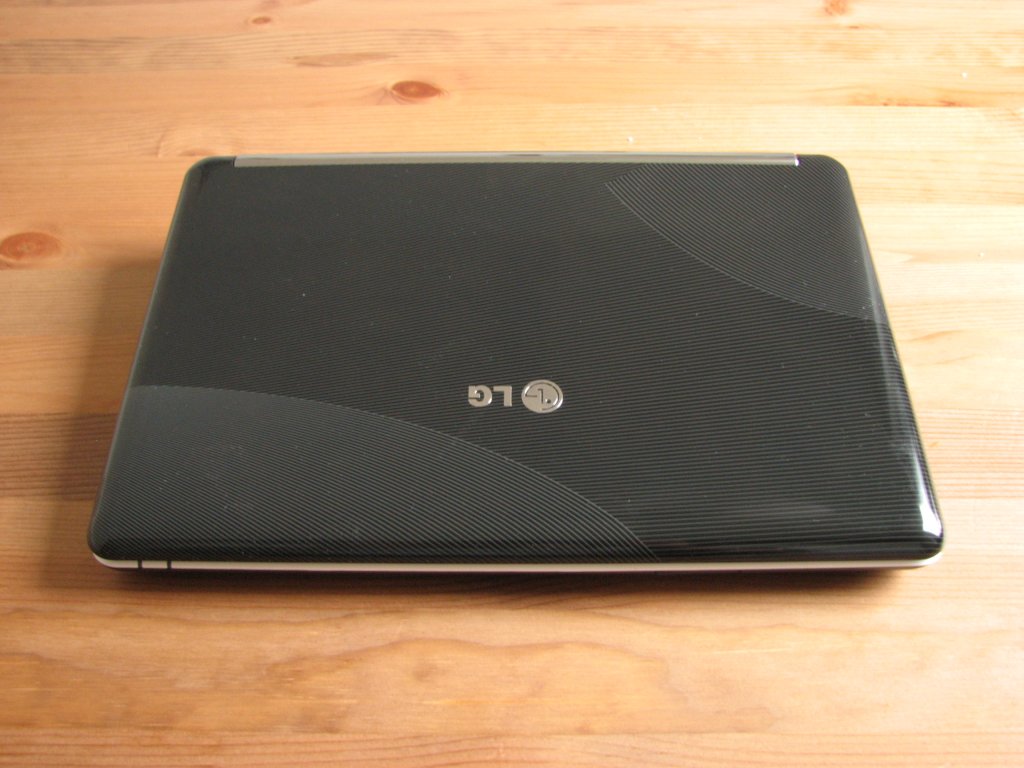 The netbook closed.
The netbook closed.
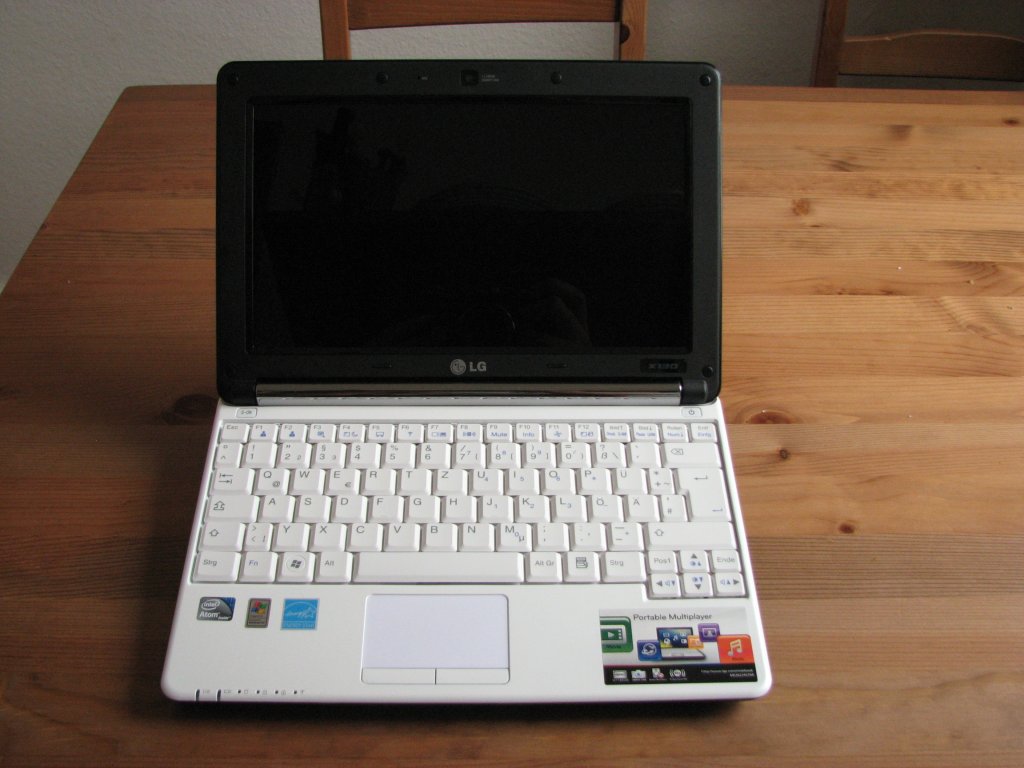 The netbook opened. Note that this is the maximum opening angle.
The netbook opened. Note that this is the maximum opening angle.
Featurewise it is pretty much what everyone else is offering right now: Intel Atom N270 @ 1.6 Ghz, 160GB hard disk, 1GB of RAM, Intel 945 Express graphics chipset, Windows XP SP 3, ethernet (10/100), wireless, bluetooth, a few usb ports, cardreader (SD and Memory Stick) and built-in webcam (1.3 megapixels, but just as blurry, noisy and having weird colors as anything else).
The actual selling point (apart form its rather aggressive price tag of 349€ here in Germany) is the battery. It is a 9-cell model claimed to run for “up to 12 hours”. And to put this out first: while 12 hours might be quite unrealistic, you can really get a solid 9 hours out of it with typical use (editing, watching videos, internet), which is really quite amazing and puts the device close to smartphones in terms of how often you have to recharge.
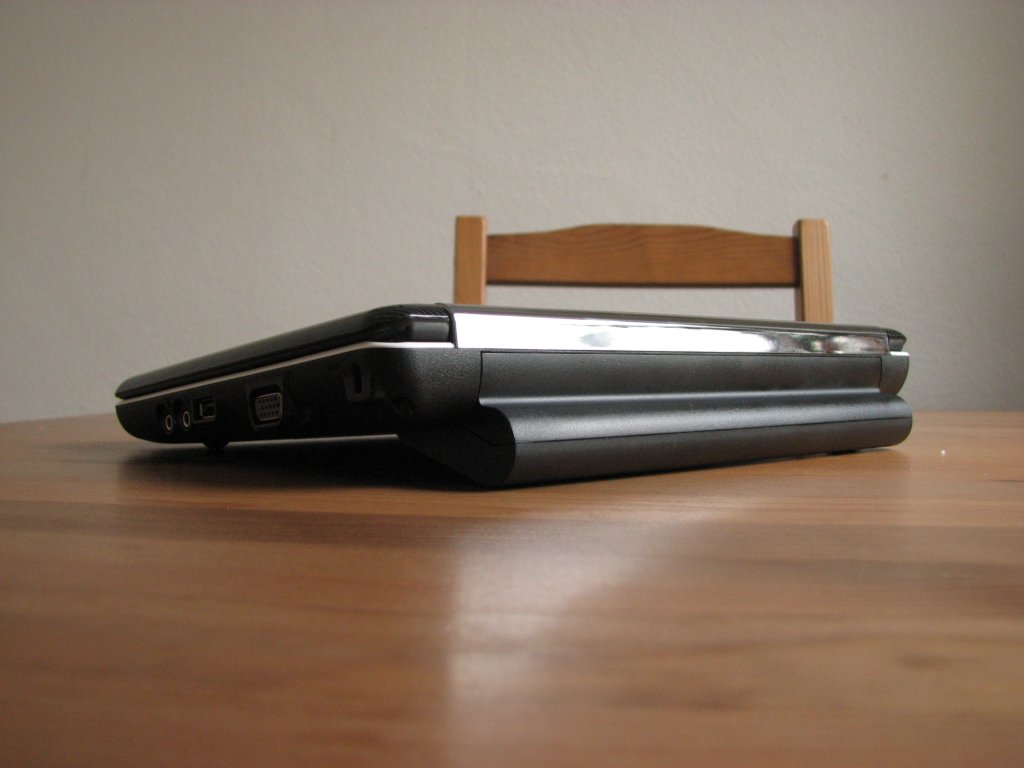 What most brochures don’t show: X130 with 9-cell battery pack.
What most brochures don’t show: X130 with 9-cell battery pack.
 The 9-cell battery pack totals 81 Wh.
The 9-cell battery pack totals 81 Wh.
What most brochures or pictures don’t tell you, though, is that this stamina comes at a price, namely a really huge battery pack. The battery back not only extends to the back, but also down, meaning that the netbook doesn’t lie flat on the table but is actually tilted. The angle is very close to what you get with ordinary keyboards (without the little stubs extended), so the usability is ok. However, if you expect to be able to stack the netbook between other books, you’ll be disappointed. The netbook also weighs about 1.4 kg with batteries, and a bit less than 1 kg without, which is still quite light, but maybe not as much as you would expect when you see the netbook on display in a store without the batteries.
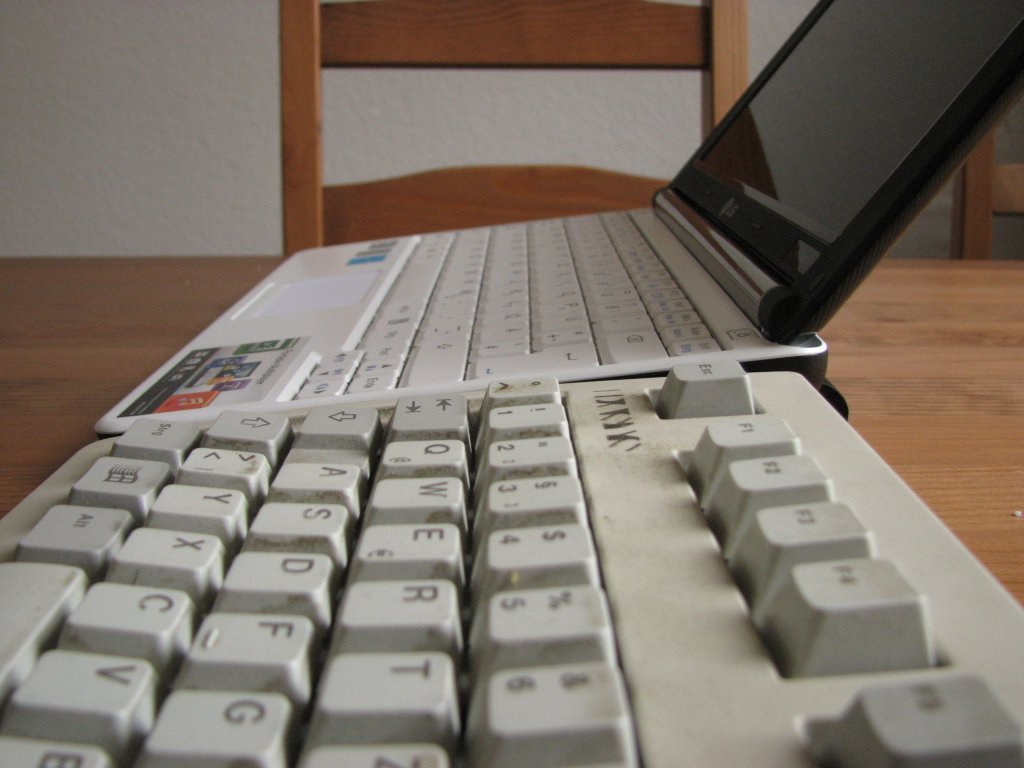 The tilt of the keyboard is comparable to a normal keyboard.
The tilt of the keyboard is comparable to a normal keyboard.
Another unpleasant surprise was that the screen does not tilt back 180 degress, but more like three fourths of that. The pictures show what this looks like. This restriction is usually not a problem, only when the netbook is really close to my body (for example, on your lap), I sometimes would like to extend it even further back.
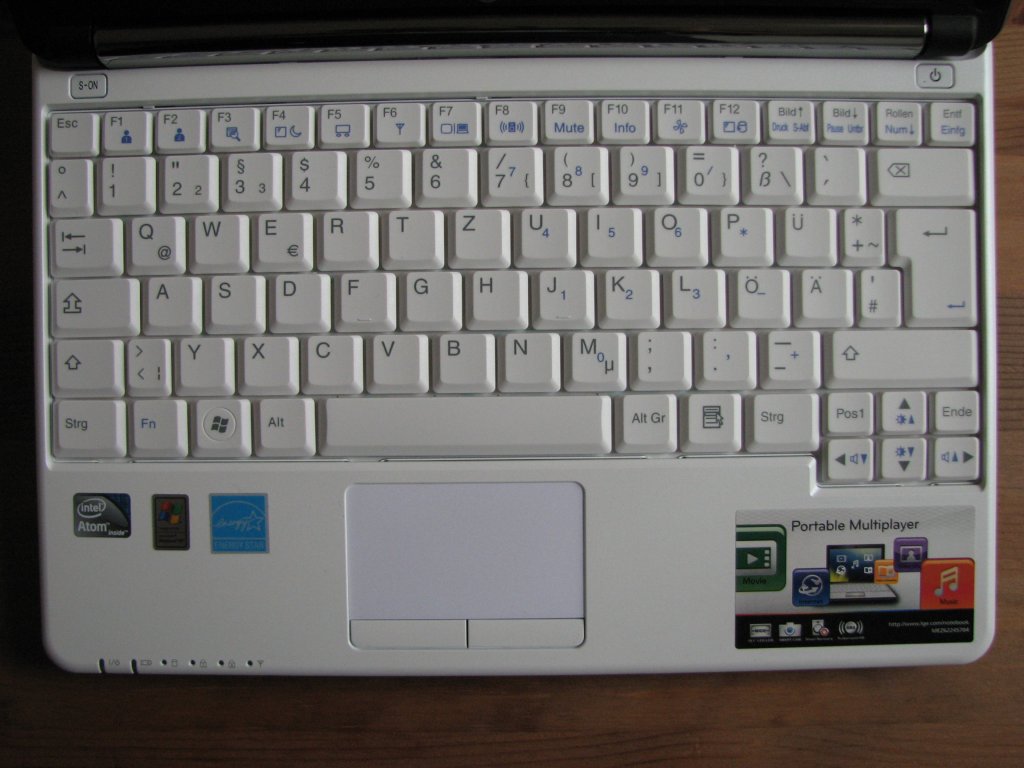 Keyboard layout is more or less standard. (And not as curved as it seems… That’s only the pincushion distortion of my camera)
Keyboard layout is more or less standard. (And not as curved as it seems… That’s only the pincushion distortion of my camera)
Apart from these two points, the netbook is very nice. It is sturdily built, the design is acceptable (although not really that cool, IMHO). The keyboard layout is ok, at least they have put the Control key right in the corner. I had to get used a bit to the “Home” and “End” key being located next to the cursor keys, separate from the page up and page down keys.
Another nice addition is the wireless card. It is based on the ralink chip rt3090 which supports the new “n” flavor with a maximum speed of 150MBit/s (if you’re router supports it, of course). The downside is that the support for it in Linux is not really there, ubuntu 9.04 does not recognize the card. There exist some drivers on the ralink page, but I haven’t yet tried that one out. There exists support for ralink chips in the most recent Linux kernels, but it seems this is for older ralink chipsets only.
I was quite surprise with how fast the system feels and how little energy it consumes (although this certainly holds for all current netbooks). You can run Google Earth full screen (which means 1024 * 600) with an estimated frame rate from 3 to 15 fps which is really quite nice. Even under load, I could only measure about 15W on the wall, more like 6W under light load. That’s about half of what most motherboards consume when they’re turned off… .
So in summary, a very nice netbook with great battery life, but also a quite bulky battery pack.
Pros
- On par with all the other company’s offerings.
- “802.1n” wireless up to 150 MBit/s.
- 9-12 hours of battery life.
- LG didn’t install too much crap, mostly minor tools like customized battery viewer, and Open Office.
- Subjectively, screen very bright at maximum.
Cons
- Battery extends in almost every direction, quite heavy.
- Screen doesn’t tilt back a full 180 degrees.
- Reflective screen.
-
No out-of-the-box drivers for the wireless under Linux right now.Update: Linux 2.6.32 ships with drivers for the RT3090 chip in the “staging” section. I managed to get it running with ubuntu 9.10 netbook remix. If I find time, I’ll summarize the steps.
Posted by at 2009-09-23 17:21:00 +0000
blog comments powered by Disqus